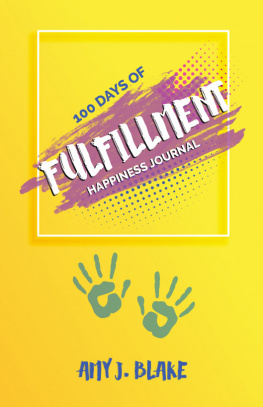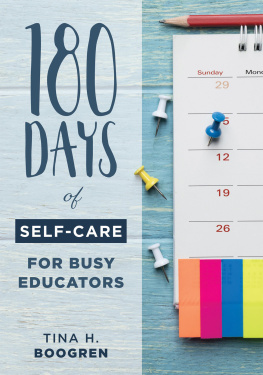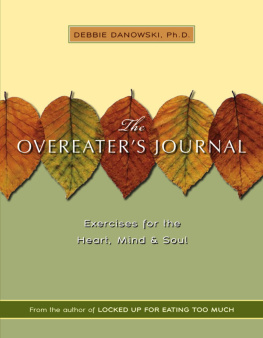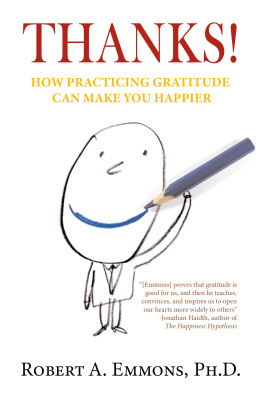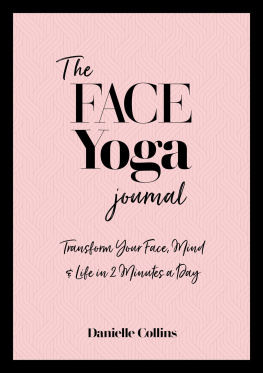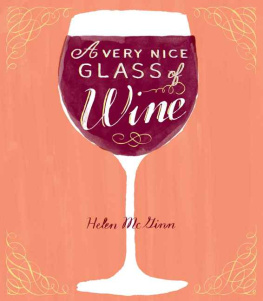EVEN HAPPIER
EVEN HAPPIER
A Gratitude Journal for Daily Joy and Lasting Fulfillment
TAL BEN-SHAHAR, Ph.D.


Copyright Tal Ben-Shahar. All rights reserved. Except as permitted under the United States Copyright Act of 1976, no part of this publication may be reproduced or distributed in any form or by any means, or stored in a database or retrieval system, without the prior written permission of the publisher.
ISBN: 978-0-07-166419-6
MHID: 0-07-166419-X
The material in this eBook also appears in the print version of this title: ISBN: 978-0-07-163803-6, MHID: 0-07-163803-2.
All trademarks are trademarks of their respective owners. Rather than put a trademark symbol after every occurrence of a trademarked name, we use names in an editorial fashion only, and to the benefit of the trademark owner, with no intention of infringement of the trademark. Where such designations appear in this book, they have been printed with initial caps.
McGraw-Hill eBooks are available at special quantity discounts to use as premiums and sales promotions, or for use in corporate training programs. To contact a representative please e-mail us at bulksales@mcgraw-hill.com.
TERMS OF USE
This is a copyrighted work and The McGraw-Hill Companies, Inc. (McGraw-Hill) and its licensors reserve all rights in and to the work. Use of this work is subject to these terms. Except as permitted under the Copyright Act of 1976 and the right to store and retrieve one copy of the work, you may not decompile, disassemble, reverse engineer, reproduce, modify, create derivative works based upon, transmit, distribute, disseminate, sell, publish or sublicense the work or any part of it without McGraw-Hills prior consent. You may use the work for your own noncommercial and personal use; any other use of the work is strictly prohibited. Your right to use the work may be terminated if you fail to comply with these terms.
THE WORK IS PROVIDED AS IS. McGRAW-HILL AND ITS LICENSORS MAKE NO GUARANTEES OR WARRANTIES AS TO THE ACCURACY, ADEQUACY OR COMPLETENESS OF OR RESULTS TO BE OBTAINED FROM USING THE WORK, INCLUDING ANY INFORMATION THAT CAN BE ACCESSED THROUGH THE WORK VIA HYPERLINK OR OTHERWISE, AND EXPRESSLY DISCLAIM ANY WARRANTY, EXPRESS OR IMPLIED, INCLUDING BUT NOT LIMITED TO IMPLIED WARRANTIES OF MERCHANTABILITY OR FITNESS FOR A PARTICULAR PURPOSE. McGraw-Hill and its licensors do not warrant or guarantee that the functions contained in the work will meet your requirements or that its operation will be uninterrupted or error free. Neither McGraw-Hill nor its licensors shall be liable to you or anyone else for any inaccuracy, error or omission, regardless of cause, in the work or for any damages resulting therefrom. McGraw-Hill has no responsibility for the content of any information accessed through the work. Under no circumstances shall McGraw-Hill and/or its licensors be liable for any indirect, incidental, special, punitive, consequential or similar damages that result from the use of or inability to use the work, even if any of them has been advised of the possibility of such damages. This limitation of liability shall apply to any claim or cause whatsoever whether such claim or cause arises in contract, tort or otherwise.
To David, Shirelle, and Eliav
for making each day even happier
Contents
Introduction
I have often been asked by my students as well as by others who have read my books to collate the exercises that I present in my classes and writings. So here they are, in Even Happier.
When I was a psychology student, the classes that had the most impact on my life were ones that encouragedor requiredus to apply the material we studied to our personal lives. Not only did I benefit from these classes, but by putting ideas into practice I also internalized and memorized the material a lot better than I ever did in classes that just taught theory. Engaging in reflection and actionwhat I have called ReflActionbrings theory to life. I have adopted the practice of reflaction in my academic classes and public workshops, and I recommend that all teachers and students in any field who are concerned with real learning do the same.
This journal, which is a workbook or a playbook, can be used by individuals on their own as a guide and companion to help them apply to their daily lives the ideas of positive psychology that I discuss in Happier and The Pursuit of Perfect. The exercises can also be done jointly by a couple, with each holding the other accountable to the weekly or daily exercises, and then sharing ideas and feelings with one another. A group of people, as part of a book club, seminar, or workplace, can also embark together on the journey outlined in this book, and then get together once a week or once a month to discuss their insights and progress.
There is room in the pages of this book for you to write in. However, I recommend that you keep a separate notebook or a dedicated file on your computer for further reflection. The space in this journal should not in any way constrain your thoughts and feelings. You can gain much value from following the process outlined in this book (directly responding to the questions I pose) as well as from free association (writing about whatever comes to mind or heart).
Doing the exercises in this book can, in the words of Harvard professor David Perkins, foster generative knowledge, knowledge that does not just sit there but functions richly in peoples lives to help them understand and deal with the world. Personally engaging students or readers in the material contributes to their experience, growth, retention, and depth of understanding. This is precisely what I hope you will attain as you journey through this journal.
Enjoy!
EVEN HAPPIER
Week 1
On Being Grateful
Psychologists Robert Emmons and Michael McCullough conducted a series of studies in which they asked participants to write down on a daily basis at least five things, major or minor, for which they were grateful. Participants responses included everything from their parents to the Rolling Stones, from waking up in the morning to God. It turns out that putting aside a minute or two every day to express gratitude for ones life has far-reaching consequences. Compared with the control group, the grateful group not only became more appreciative of life in general but also enjoyed higher levels of well-being and positive emotions: they felt happier, more determined, more energetic, and more optimistic. They were also more generous and more likely to offer support to others. Finally, those who expressed gratitude also slept better, exercised more, and experienced fewer symptoms of physical illness.
I have been doing this exercise daily since September 19, 1999 (three years before Emmons and McCullough published their findings), when I heard Oprah tell her viewers to do itand so I did! From around the time my son David turned three, we have been doing a variation of this exercise together. Every night I ask him, What was fun for you today? and then he asks me the same question. My wife and I regularly remind ourselves what we are grateful for in each other and in our relationship.
When we make a habit of gratitude, we no longer require a special event to make us happy. We become more aware of good things that happen to us during the day, as we anticipate putting them on our list. The gratitude list can include the name of a person you care about, something that you appreciate that you or someone else did, or an insight that you had as a result of writing in this journal.
Next page

